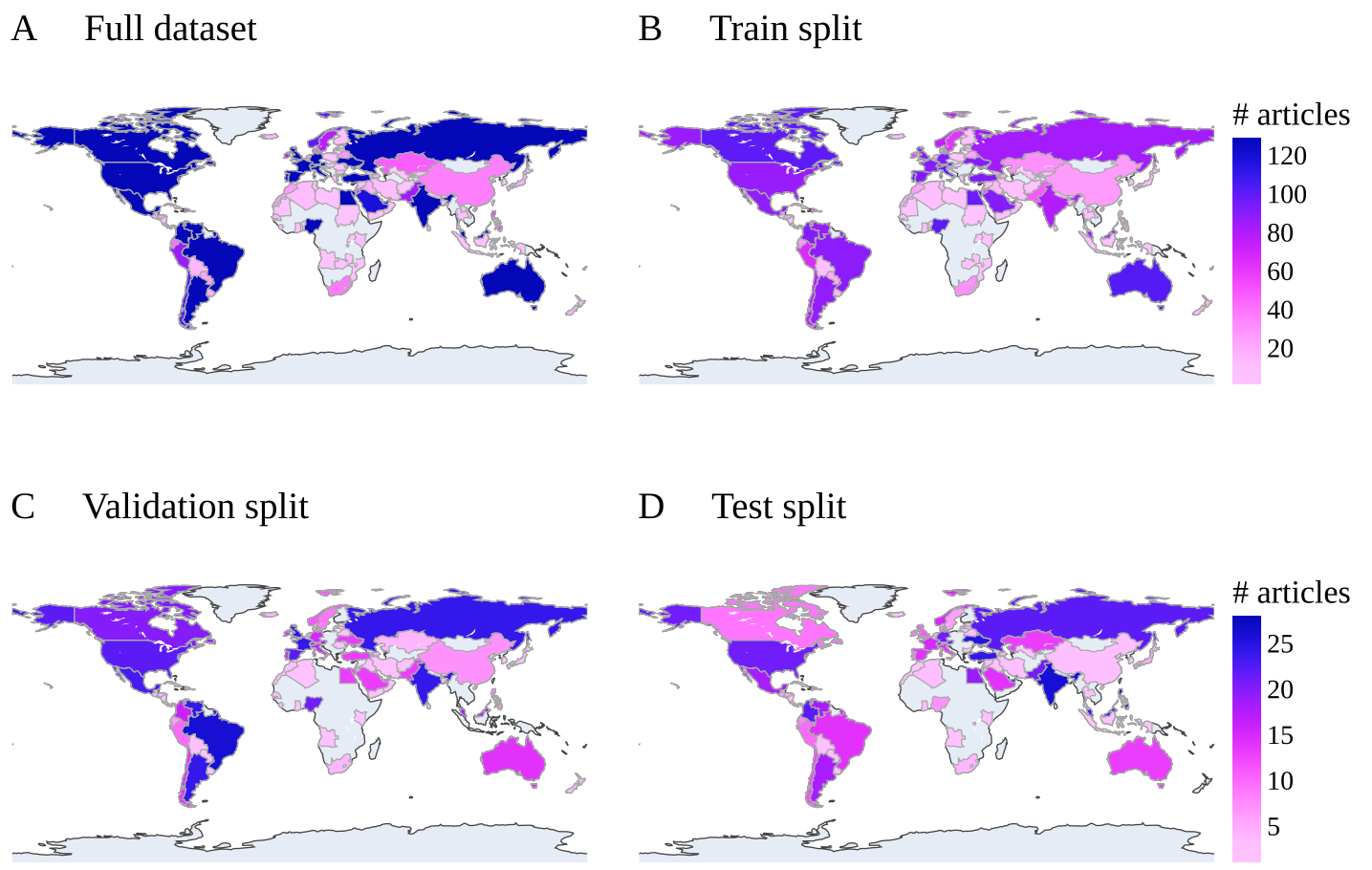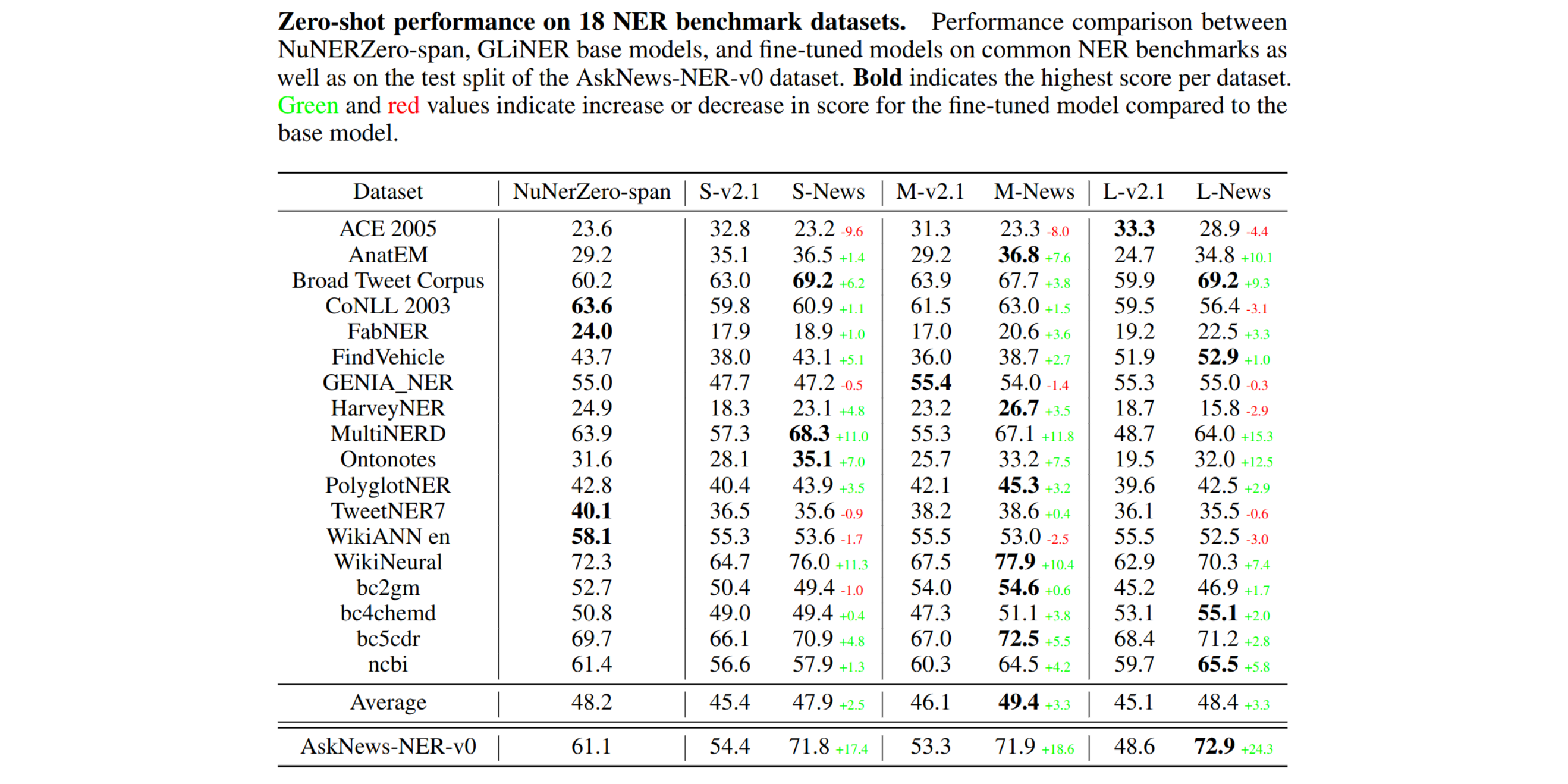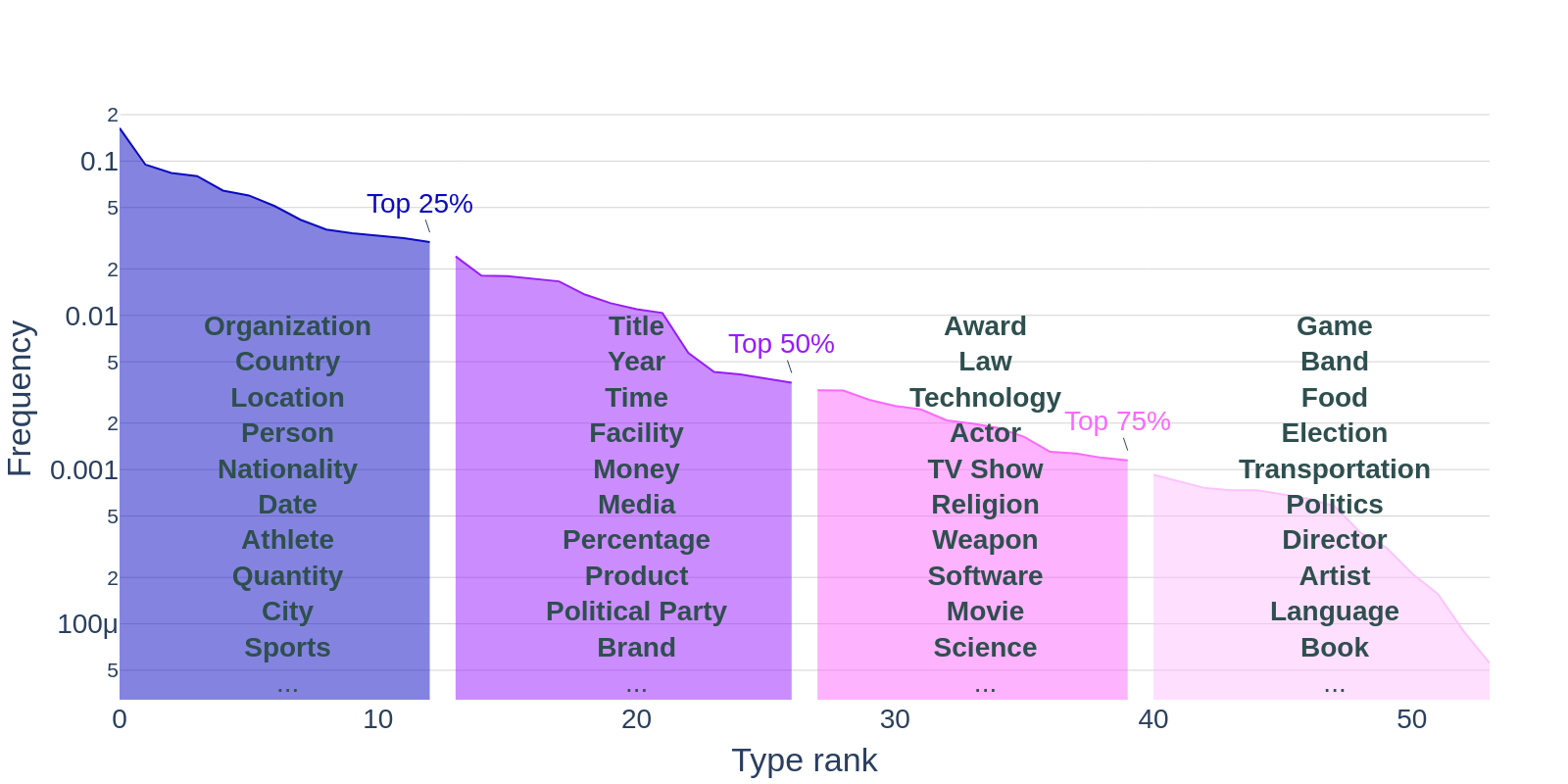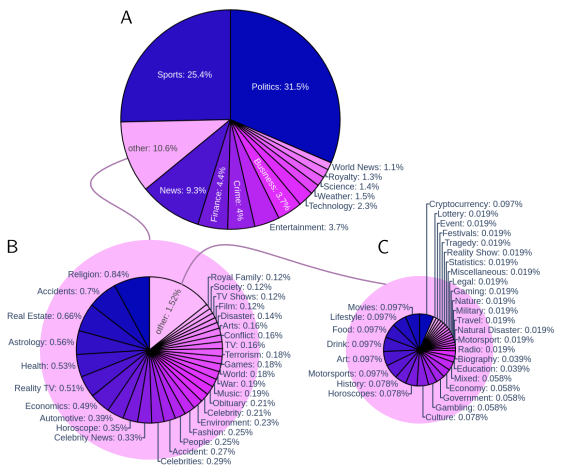Dataset Card for Dataset Name
This dataset aims to improve the representation of underrepresented topics and entities in entity extractors, thereby improving entity extraction accuracy and generalization, especially on the latest news events (dataset represents broad news coverage between February 20-March 31, 2024). The dataset is a collection of news article summaries, translated and summarized with Llama2, and then entities extracted with Llama3. The distribution of data origin follows:
Dataset Details
Dataset Description
- Curated by: Emergent Methods
- Funded by: Emergent Methods
- Shared by: Emergent Methods
- Language(s) (NLP): English (en) (English texts and translations from Spanish (es), Portuguese (pt), German (de), Russian (ru), French (fr), Arabic (ar), Italian (it), Ukrainian (uk), Norwegian (no), Swedish (sv), Danish (da)).
- License: Apache 2.0
Dataset Sources
- Repository: AskNews API
- Paper: [More Information Needed]
- Demo [optional]: [More Information Needed]
Uses
This dataset is intended to be used to fine-tune entity extractors for improved generalization, as well as higher accuracy on the latest news events. For example, we used this dataset to fine-tune GLiNER-news, which is a fine-tuned version of GLiNER, geared toward improved entity extraction on news articles. The fine-tune improved performance for nearly all benchmarks (even beyond news).
Dataset Structure
The dataset is structured as follows:
5049-formatted-summaries_llama3-dataset_splits.json
- train
- test
- validation
Where each split is a list of structured JSON, where each sample is structured as follows:
{
"metadata": {
"source_country": <country str>,
"article_language": <language str>,
"article_pubDate": <pub_date datetime>,
"topic-classification": [
<topic classification str>
],
"articleId": <AskNews article uuid>
},
"tokenized_text": [
<word string>,
<word string>,
...
],
"ner": [
[
<Start word int>,
<Stop word int>,
<Entity str>
],
...
]
},
...
Dataset Creation
Curation Rationale
This dataset was created in an effort to improve the representation of underrepresented topics and entities in entity extractors, thereby improving entity extraction accuracy and generalization. The pre-processing pipeline for this dataset follows a strict set of steps:
- Enforce diversity on the collection of news articles from diverse countries/languages/sources.
- Translate and summarize the articles with Llama2.
- Embed summaries to vectors
Present dataset curation:
- Cluster embeddings according to topic, for 29 evenly spaced 4 hour buckets of articles throughout the duration of February 20-March 30 2024.
- Pull samples from clusters, distributing evenly across country of origin.
- Extract entities from each summary using Llama3.
The data was used to train GLiNER-news, which is a fine-tuned version of GLiNER, geared towared improved entity extraction on news articles. The fine-tune improved performance for nearly all benchmarks (even beyond news):
The entity types in the dataset are limited to the following:
Source Data
The synthetic data is pulled from AskNews API, which generates news translations and summaries using Llama2/3 from open-web news content.
Data Collection and Processing
The AskNews API uses open-web news articles to generate synthetic data (news article summaries) with Llama2/3. This dataset was pulled from the API by querying 4 hour buckets of articles between February 20 and March 31, 2024. These buckets were then processed with the following steps:
- Cluster embeddings according to topic, for 29 4-hour buckets of articles evenly dispersed throughout the duration of February 20-March 30 2024.
- Pull samples from clusters, distributing evenly across country of origin.
- Extract entities from each summary using Llama3.
Who are the source data producers?
The source data producer is the AskNews API, which uses open-web news articles to generate translations and summaries.
Annotation process
The news translations and summaries are passed to Llama3 for entity extraction to extract entities.
Who are the annotators?
Emergent Methods built and oversaw the systems used to annotate the dataset.
Personal and Sensitive Information
This dataset does not contain any information that is not publicly available on the open-web.
Bias, Risks, and Limitations
Although the goal of the dataset is to reduce bias, and improve diversity, it is still biased to western languages and countries. This limitation originates from the abilities of Llama2 for the translation and summary generations. Further, any bias originating in Llama2 training data will also be present in this dataset, since Llama2 was used to summarize the open-web articles. Further, any biases present in Llama3 will be present in the present dataset since Llama3 was used to extract entities from the summaries.
Recommendations
Carefully consider the dataset topic, country, and language distributions when implementing or training on this data.
Citation [optional]
BibTeX:
[More Information Needed]
APA:
[More Information Needed]
Dataset Card Authors
Elin Törnquist, Emergent Methods elin at emergentmethods.ai Robert Caulk, Emergent Methods rob at emergentmethods.ai
- Downloads last month
- 200



